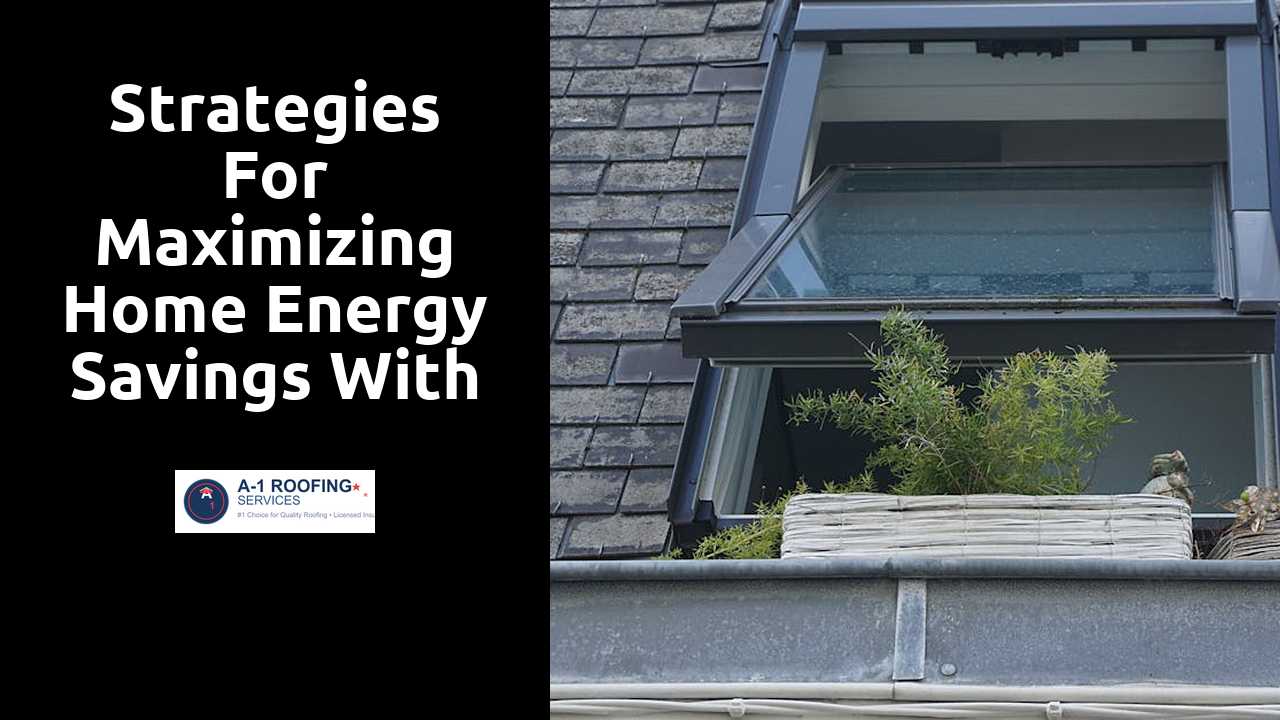
Strategies for Maximizing Home Energy Savings with Roofing
Table Of Contents
Regular Maintenance for Optimal Performance
Regular inspections can identify potential issues before they escalate into costly repairs. Homeowners should schedule seasonal checks to look for damage caused by weather, debris buildup, or wear and tear. Ensuring proper drainage can prevent leaks and minimize ice dam formation during winter months. Cleaning gutters and downspouts will also contribute to effective water management and extend the roof's lifespan.
Keeping the roofing material in top condition is essential for maintaining energy efficiency. Replacing missing or damaged shingles helps to retain the home's insulation properties. Sealants can also be applied where necessary, especially around vents and chimneys, to prevent air leaks. Addressing these maintenance tasks promptly can lead to significant energy savings over time, as a well-maintained roof minimizes heating and cooling demands.
Discover more here.
Checkpoints for Seasonal Roof Inspections
Regular roof inspections can uncover potential issues before they escalate into costly repairs. Homeowners should start by examining the shingles for any signs of wear or damage. Missing, cracked, or curling shingles often signal the need for immediate attention. Additionally, checking for granule loss in gutters can provide insight into the overall condition of the roof. Ensuring that all penetrations, such as vents and chimneys, are sealed properly protects against leaks and water damage.
Debris accumulation can be detrimental to roofing materials. Clearing away leaves, branches, and other debris from the roof surface and gutters is essential to prevent moisture buildup. While inspecting the roof, look for signs of mold or algae growth, which can indicate excess dampness. Areas where flashing meets the roof should also be scrutinized for rust or deterioration. Regular attention to these checkpoints contributes significantly to prolonging the life of the roof and enhancing overall energy efficiency.
Utilizing Solar Panels Effectively
Integrating solar panels into a roofing system can significantly enhance energy efficiency and reduce utility costs. The ideal placement of panels is crucial; roofs with optimal sun exposure should be prioritized. A south-facing roof angle tends to capture the most sunlight throughout the day. Additionally, the tilt of the panels can maximize energy absorption, allowing homeowners to harness more power.
A thoughtful choice of solar technology can also impact overall performance. Monocrystalline panels are known for their high efficiency and space-saving design, making them ideal for smaller rooftops. In contrast, thin-film panels offer flexibility and can be installed on a variety of surfaces. Homeowners should consider their specific energy needs and consult with experts to determine the best solar solutions tailored to their roofing structure.
Integrating Solar Solutions with Your Roofing
The integration of solar panels into roofing systems is a smart way to harness renewable energy while enhancing a home’s energy efficiency. When designing a roof, considering the placement and orientation of solar panels is essential. Roofs that face south or west typically receive the most sunlight throughout the day, maximizing energy production. Additionally, building codes and local regulations may dictate specific installation methods, ensuring panels are secured and functional.
Incorporating solar solutions can also influence roofing materials and design choices. Selecting materials with reflective properties can help reduce heat absorption, complementing the energy generated by solar panels. Moreover, advanced options such as solar shingles provide an aesthetically pleasing alternative to traditional panels. Ensuring that solar technologies are seamlessly integrated into the roof promotes both function and form, creating a cohesive energy-efficient system.
The Impact of Roof Design on Energy Savings
Roof design plays a crucial role in determining energy efficiency within a home. The pitch and shape of the roof can significantly influence how heat is retained or lost throughout the seasons. Designs with steeper pitches may allow for better air circulation, promoting cooling during hot months, while flat roofs may be advantageous for maximizing space for solar panels. Materials used in roofing can also affect energy retention. For instance, reflective materials can minimize heat absorption, ideal for warmer climates.
In addition to pitch and material, the orientation of the roof can further enhance energy savings. South-facing slopes can capture more sunlight, especially in areas with abundant sunshine. This strategic placement optimizes the potential for solar energy harnessing while contributing to natural heating during colder months. Homeowners should carefully consider these design elements when constructing or renovating their roofs to promote long-term energy efficiency and reduce utility costs.
Choosing the Right Roof Shape and Pitch
The shape and pitch of a roof play a significant role in both energy efficiency and overall aesthetic appeal. Different designs can either trap heat or encourage airflow. For example, a steeply pitched roof allows for better ventilation, helping to reduce temperature fluctuations in the attic. This can lessen the burden on heating and cooling systems, ultimately leading to lower energy consumption.
Selecting the right roof shape also allows homeowners to optimize natural light and heat gain from sunlight. Gable roofs facilitate high solar exposure, which can be particularly beneficial in cooler climates. Conversely, flat roofs may be advantageous in warmer regions where heat management is crucial. Each design choice has its implications for energy efficiency, requiring careful consideration to align with local environmental conditions and personal preference.
Related Links
Understanding the Benefits of Reflective Roof CoatingsInnovations in Solar Roofing Technologies